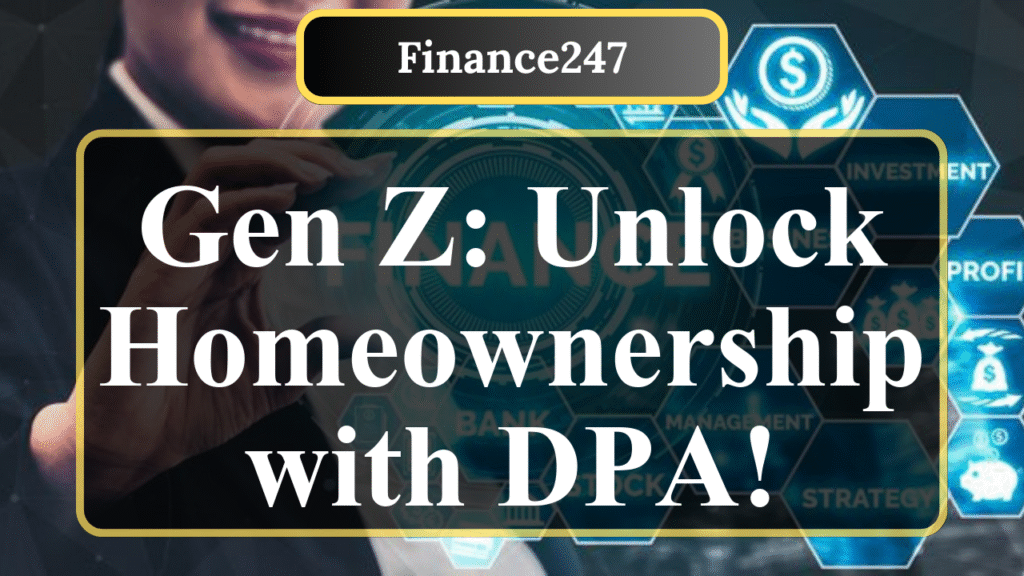For Gen Z, saving for a home down payment is tough, but assistance programs can help. This article guides you through researching federal, state, and local programs, leveraging online tools, and consulting lenders. It highlights eligibility criteria, program types, and financial strategies to make homeownership more accessible for young buyers.
Navigating Down Payment Assistance Programs for Gen Z Homebuyers
For Gen Z, entering the housing market can feel like an uphill battle, with rising home prices and economic challenges like inflation and student debt. Down payment assistance (DPA) programs offer a lifeline, providing grants, forgivable loans, or low-interest loans to cover upfront costs. Here’s how to research and access these programs effectively.
Understand Down Payment Assistance Options
DPA programs come in various forms: grants that don’t require repayment, forgivable loans that are waived after a set period (often 5–10 years), and low- or no-interest second mortgages. Some programs target first-time or first-generation homebuyers, which many Gen Zers qualify for, especially those whose parents don’t own homes. For example, the Michigan State Housing Development Authority (MSHDA) offers a $25,000 deferred loan for first-generation buyers, forgivable after five years. Programs like these often require homebuyer education courses and may have income or credit score requirements, such as a minimum 640 credit score for South Carolina’s SC Housing program.
Start with Federal and National Resources
The U.S. Department of Housing and Urban Development (HUD) is a great starting point. HUD’s website lists homeownership programs by state, including loans, grants, and vouchers tailored for first-time buyers. The Housing Choice Voucher Homeownership Program, for instance, assists low-income buyers with down payments and monthly expenses. National programs like the Chenoa Fund offer DPA for borrowers of color or those without generational wealth, providing up to 3.5% of the home’s purchase price. Check eligibility criteria, as many programs cap income at 120% of the area median income (AMI).
Explore State and Local Programs
State housing finance agencies, like California’s CalHFA MyHome Assistance Program, provide deferred loans up to 3–3.5% of the purchase price for first-time buyers. In New Jersey, the NJHMFA First-Generation Down Payment Assistance Program pairs with first mortgages to offer up to $22,000, depending on the county. Local programs, such as Rhode Island Housing’s $25,000 forgivable loan, often have specific requirements like using approved lenders. Search online for “down payment assistance [your city/state]” or visit sites like DownPaymentResource.com, which catalogs over 2,000 programs nationwide.
Consult Mortgage Lenders
Not all lenders work with every DPA program, so ask potential lenders about partnerships. For example, the Colorado Housing and Finance Authority (CHFA) offers grants up to 3% of the first mortgage, but borrowers must use a CHFA FirstStep loan. Lenders can clarify which programs align with your mortgage type, such as FHA or conventional loans, and guide you through eligibility, like minimum credit scores or income limits.
Leverage Online Tools and Financial Education
Websites like DownPaymentResource.com match your profile to local programs based on income, location, and homebuyer status. Many programs require completing a homebuyer education course, which can also improve your financial literacy. Gen Z, with 46% relying on family for financial support, can benefit from these courses to understand budgeting and credit management. The St. Louis Fed offers free resources to boost financial knowledge, critical for navigating DPA terms.
Consider Parental Support and Other Strategies
Nearly 78% of Gen Z homeowners receive down payment help, often from parents, compared to 54% of millennials. If family support isn’t an option, explore other strategies like moving back home to save on rent, a tactic 49% of Gen Z buyers use. Budgeting tools, like the 50/30/20 rule (50% needs, 30% wants, 20% savings/debt), help prioritize savings. Gen Z’s tech-savvy nature also makes them ideal candidates for researching programs via mobile platforms or social media, though beware of unverified “finfluencer” advice.
Evaluate Program Drawbacks
DPA programs may come with higher interest rates, fees, or requirements to stay in the home for a set period. For instance, some loans require repayment if you sell early. Review terms carefully to avoid surprises, as 31% of Gen Z mistakenly believe a 20% down payment is mandatory, when many programs allow as little as 3%.
Act Early and Be Persistent
Start researching DPA options as soon as you begin house hunting, as processing times can delay closing. Be proactive—first-time buyers may need to advocate for themselves, as lenders prioritize simpler applications. With 50% of Gen Z citing homeownership as a delayed milestone due to costs, early research can make all the difference.
Disclaimer: This article is for informational purposes only and not financial advice. Consult a certified financial advisor or mortgage professional for personalized guidance. Information is sourced from government websites, financial institutions, and industry reports.


